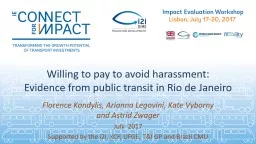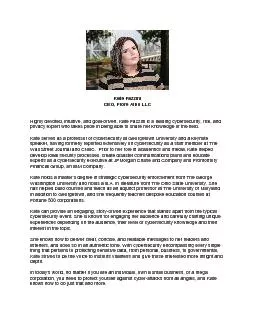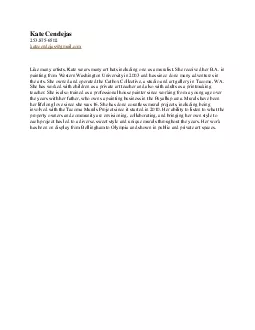PPT-Florence Kondylis, Arianna Legovini, Kate Vyborny and Astrid Zwager
Author : tatiana-dople | Published Date : 2018-02-24
July 2017 Supported by the i2i KCP UFGE TampI GP and Brazil CMU Willing to pay to avoid harassment Evidence from public transit in Rio de Janeiro Harassment in public
Presentation Embed Code
Download Presentation
Download Presentation The PPT/PDF document "Florence Kondylis, Arianna Legovini, Kat..." is the property of its rightful owner. Permission is granted to download and print the materials on this website for personal, non-commercial use only, and to display it on your personal computer provided you do not modify the materials and that you retain all copyright notices contained in the materials. By downloading content from our website, you accept the terms of this agreement.
Florence Kondylis, Arianna Legovini, Kate Vyborny and Astrid Zwager: Transcript
Download Rules Of Document
"Florence Kondylis, Arianna Legovini, Kate Vyborny and Astrid Zwager"The content belongs to its owner. You may download and print it for personal use, without modification, and keep all copyright notices. By downloading, you agree to these terms.
Related Documents














